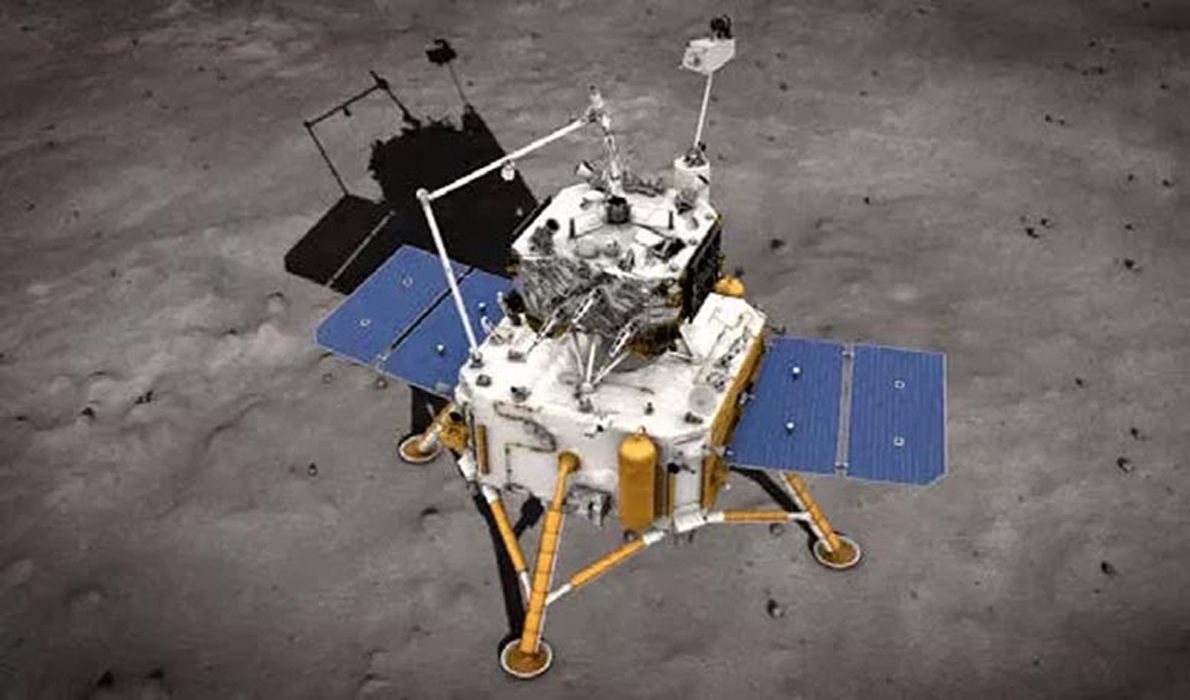Spectral reflectance data taken by China’s Chang’e 5 lunar lander has revealed low levels of water in the soil and rocks of the spacecraft’s landing site.

China is in the middle of an ambitious four-phase lunar exploration program, and the most recently completed step included the landing of Chang’e 5, whose purpose was to take and return a sample of the lunar surface. The lander arrived on the Moon on December 1, 2020, collected over 1,700 grams of lunar rock and regolith, and returned to Earth on December 16, 2020. This accomplishment made China only the third country to bring back samples of the Moon, after the U.S. and Soviet Union, and the first to do so in almost 45 years. But sample collection wasn’t the only science performed by the lander.
Chang’e 5 landed in a geologically young mare basalt, basically a lava flood plain, and took spectral reflectance measurements of the surrounding rock and regolith. With a correction made to account for the heat of the lunar surface, an analysis of the spectra found the absorption signatures of water. The results were published in Science Advances last week and led by researchers from the Institute of Geology and Geophysics of the Chinese Academy of Sciences.
Now, before anyone gets all excited about water on the Moon, which has been detected by several orbiting missions and by the SOFIA airborne telescope, this particular analysis of the lunar soil found less than 120 parts per million of water, and it likely came from the solar wind. We discussed this idea recently where charged particles in the solar wind interact with the surface dust of asteroids to create water molecules that hide under that surface. It seems like this is the case on the Moon as well.
Interestingly, a rock that was analyzed was found to have about 180 parts per million of water, suggesting that the lunar interior may be a better source for in situ water. That rock was on the surface and was likely ejected up onto Chang’e 5’s landing site either during an explosive point in the eruption that flooded the mare or from the collision of a meteorite.
Of course, the main reason this discovery is exciting is that everyone, and by everyone we mean the U.S., Russia, China, and all their space partners are looking for in situ resources to make a lunar base feasible in the near future. In fact, that is China’s final phase in their exploration program — use in-situ resources to construct a research station near the lunar south pole. However, before that phase happens, China has one more lunar mission to conduct: Chang’e 6 is expected to launch in 2024 and will also return samples to Earth.
We’ll continue to update you with their progress and their science results as they happen.
More Information
China’s Chang’E-5 Lander Makes First Onsite Detection of Water on the Moon (SciTechDaily)
“In situ detection of water on the Moon by the Chang’E-5 lander,” Honglei Lin et al., 2022 January 7, Science Advances
This story was written for the Daily Space podcast/YouTube series. Want more news from myself, Dr. Pamela Gay, and Erik Madaus? Check out DailySpace.org.
This article was originally posted on medium.com.





